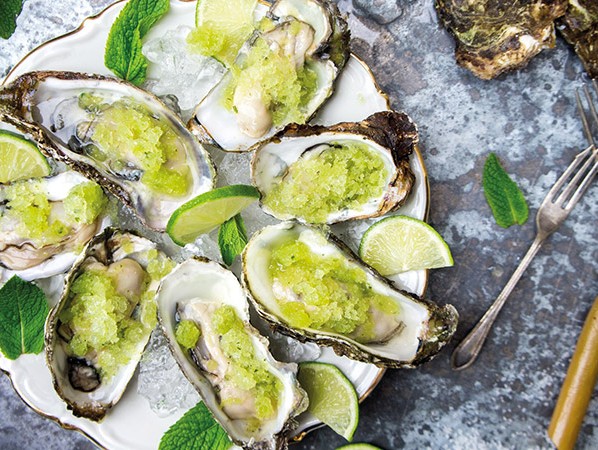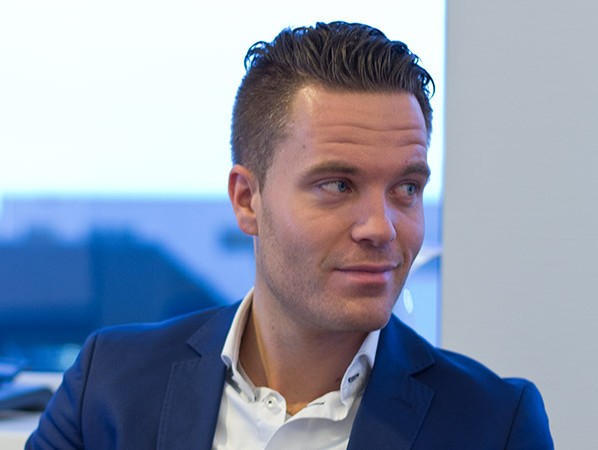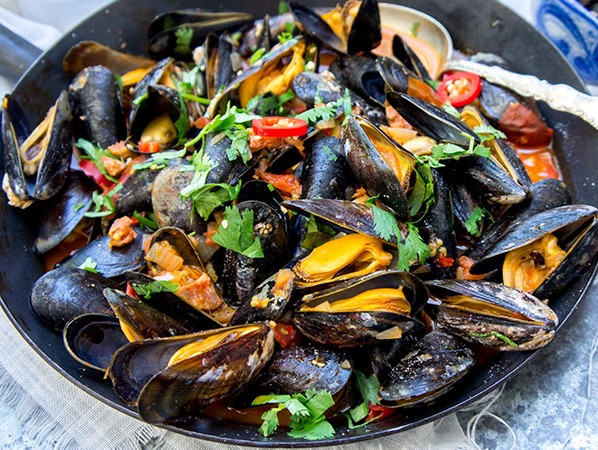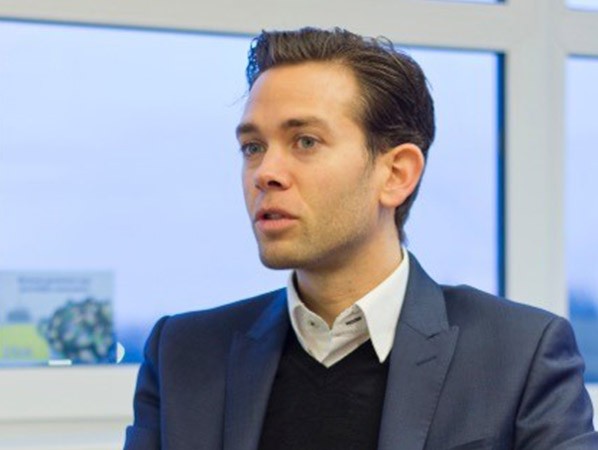
How to reach the new generation who would sooner prefer sushi over shellfish? How can you become more successful worldwide? How do you continuously build on your brand recognition? These questions have one answer in common: not by competing on a price level. Prins & Dingemanse prefers to distinguish itself as a strong brand, by constantly looking for innovations and by keeping their door open to anyone who wants to discover the amazing taste of oysters and mussels.
Real 'mussel men' do not live in Scheveningen (as the old Dutch nursery rhyme tells us), but in Yerseke, in the province of Zeeland. This is where they farm mussels and oysters in the shelter of the Oosterschelde. The company also has mussel and oyster plots in the Grevelingen lake and in the Wadden Sea and they are divided among various family businesses. There is hardly any mussel company that is capable of promoting its brand so well as Prins & Dingemanse. And this also results in the stable course of the company in a turbulent environment of tough competition, supermarket price wars, and a new generation that is not familiar with the products. "Many mussel farming companies say: a mussel is a mussel, and we offer them at the lowest price”, says Jan Prins, CEO of Prins & Dingemanse. It's a way of doing business that we never believed in. Our practices have always been about giving attention to the brand and quality. More than seventy per cent of our products are sold under our own name”, he says proudly.
Why do mussels and oysters thrive here in Zeeland, like they do nowhere else in the world? "The condition of the soil of the seabed in the Oosterschelde is excellent”, explains Jan. "Besides that, the quality and salinity of the water are important factors, as well as the fact that oysters and mussels are cultivated in a delta. This ensures that the shells are sheltered during a storm but that they can still benefit from the rich nutrition that is brought in with the currents. The Grevelingen lake is a non-tidal salt-water lake. It's also a perfect spot to cultivate oysters. When I taste an oyster, I know exactly from which plot it comes. The best oyster plots give beautiful rich flesh, a delicious structure, and a creamy taste." But good soil and rich nutrition are not enough. "Basically, we are nothing else than farmers at sea”, says Jan. "We are always working on the different stages of the cultivation and depend on the whims of nature."

Since a few months, Christian Koeman has been the new Export & New Business Manager at Prins & Dingemanse. He is born and bred in Zeeland and has always been involved in the mussel and oyster cultivation through his role within local politics and as a lobbyist for the Vereniging Oesterputten. Over the past years, his former job in the food industry made him travel around the world. He saw different markets and got many international contacts. "A few months ago, I decided that it was time for a new challenge”, he explains. "But one of the conditions was that I wanted to work for an internationally operating company. That is why I considered moving to Rotterdam, but my heart lies in Zeeland and Prins & Dingemanse just crossed my path. This company has still so much potential and opportunities, and I certainly want to contribute to that."
From Yerseke, the mussels and oysters are shipped to all corners of the world. This morning's catch is shipped off the same day and can find itself on a table in Hong Kong or Dubai tomorrow. The MAP packaging which the Prins family developed in the 1990s has contributed to extending the distances to where they can be shipped. Inside the leak-free plastic containers, a special gas is used to mimic the living environment of the mussels, bringing them into a kind of sleep. The MAP packaging extended the shelf-date of the mussels from a few days to a week. When you ask Jan and Christian, a large part of the world still needs to be conquered so they know what to do. Christian regularly visits food companies and restaurants abroad. And in his luggage, you will find the salty delights from Zeeland. "A few months ago, I visited a number of chefs in Denmark to let them taste our oysters. I brought our Flat Oysters, Creuses, and the Connaisseur Oysters. They could barely believe their own taste buds! Nine out of ten times, they immediately said: send them over now."

The biggest challenge for Prins & Dingemanse is finding ways to reach the new generation because mussels and oysters are now predominantly eaten by the older generation. Christian: "Young people are generally not big fans of oysters and mussels, and this is usually because they never tried them. They will not be easily triggered to just start eating an oyster, but they do like great concepts and products with a story or status. It forces us to adopt a conceptual mindset and to make a traditional product 'Instagram worthy'. For example, by posting twelve oysters with a bottle of gin. Or to present mussels as a superfood for athletes that is rich in protein and iron. The canning department of Prins & Dingemanse already experiments with that conceptual thinking. Take, for example, the jars with cooked mussels in balsamic vinegar in various tastes or canned smoked fish. The packaging has a classy look and the content is perfect for a salad, small bites, or a table filled with tapas".
Prins & Dingemanse also has another way of promoting mussels and oysters. They started a collaboration with the local tourist office and now regularly open their doors as Yerseke draws tens of thousands of tourists each year already. People can book a guided tour along the oyster ponds (the wet warehouses where the oysters are stored) and they can enjoy an oyster tasting or a wonderful meal at one the many local fish restaurants. Prins & Dingemanse realises that it takes a lot of effort to get a box of mussels or oysters on the supermarket shelves. Jan and Christian show us the large warehouses that contain basins of water from the Oosterschelde. "After the harvest, the mussels are brought here to rest. This enhances the quality and shelf life”, explains Jan. "After that, they are put on a conveyor belt and go through a step-by-step cleaning process." It is surprising to see how much manual labour it takes to check and sort the mussels. They are thoroughly checked and then coded, so you can always trace them back to a batch. The mussels are packaged in containers of one, two, five, or ten kilos. The traditional jute bags are also still used, and they are sewn closed by hand.

The oysters that have just been harvested from the plot are sorted in an adjacent hall. The shells come in all shapes and sizes. "Oysters are traditionally cultivated on the seabed”, says Jan. "But we also cultivate them according to the French method: on tables, at around 70 centimetres above the floor. You can easily see whether oysters received enough care during the cultivation. This is because you have to regularly pick them up and turn them over, so the growth edges are etched off a bit and they get their cupped shape. When you don't do this, you get pencil- or banana-shaped shells that hardly contain any flesh." After three to five years, the oysters are harvested for consumption. Each shell is tapped to check whether the shell contains flesh. The clients' orders are then packaged on a bed of seaweed in wooden baskets. The oysters that are not yet ordered are kept in the famous oyster ponds.
Anyone who wants to eat in a sustainable manner can safely put mussels or oysters on the menu. "Every new oyster cultivation starts with the collection of oyster brood. For this, we use shells that use to hold the flesh that was processed in our canning factory”, explains Jan. He points at the black and white dots on the inside of the shells. "These black dots are Creuse broods and the white dots will eventually grow into the flat oysters. You could see these shells as a waste product, but we use them as a resource." In the 1990s, Jan's father, together with TNO, developed a method to efficiently collect mussel seed (or spat) for the cultivation of mussels. This resulted in a mussel seed collection installation (MZI), a floating tube with a rope net, on which mussel larvae attach themselves. Jan: "When they are large enough, we collect them by using a brushing machine on the ship. We pass the nets and strip off a layer of mussel seed that is then brought to a plot where the mussels can grow quickly. Thanks to the MZI, the mussel production is much more stable than in the old days. Furthermore, the way mussels are farmed now is also a sustainable process. By relocating the mussel seed, the larvae get more room to grow and survive. It also improves the biodiversity of the water." Sustainable, healthy, easy, and sociable. According to Jan and Christian, this is what eating the mussels and oysters from Zeeland is all about. If it's up to them, the whole world should know this.
"New products that follow the latest trends and which appeal to the younger generation; it is something we work on constantly. At Prins & Dingemanse, we like to look beyond our own organisation when developing new products. Maybe you have a beautiful product that would create a wonderful combination with our mussels and oysters. We kindly invite to brainstorm with us about possible opportunities that may benefit us all." Jan and Christian ([email protected])
On 7 February, the OSV will visit this innovative company. Go to www.osvnetwerk.com for more information.
Source: © Vakblad Voedingsindustrie 2019